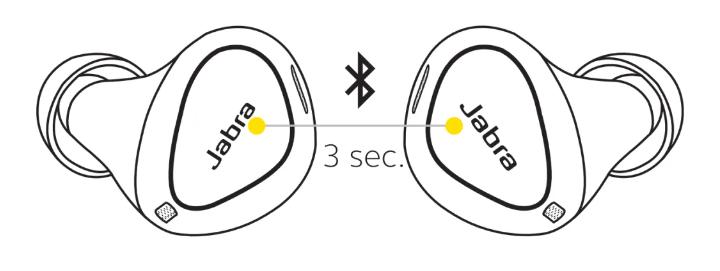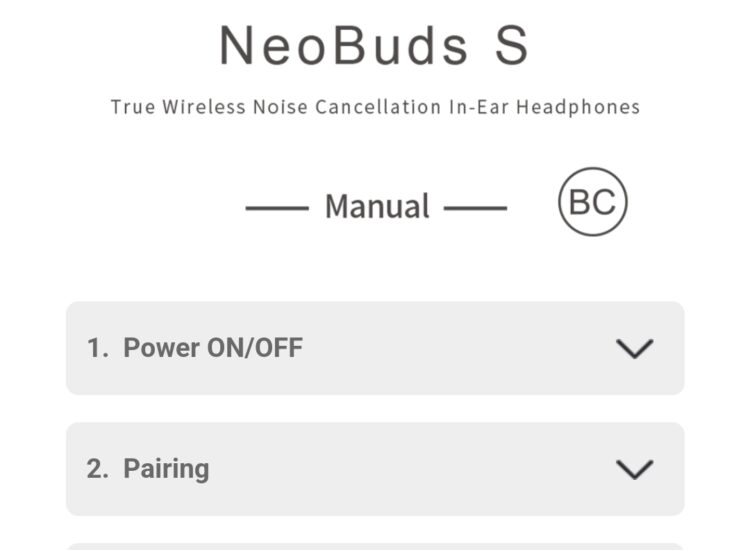Navigating the Digital Landscape: A Comprehensive Guide to Online Advertising
In today’s interconnected world, online advertising has become an indispensable tool for businesses seeking to reach their target audiences, build brand awareness, and drive conversions. The digital realm offers a vast array of opportunities for advertisers to connect with potential customers in ways that were previously unimaginable. This comprehensive guide will delve into the multifaceted world of online advertising, exploring its definition, evolution, various types, the process of campaign creation and management, methods for measuring effectiveness, and the trends shaping its future.
Toc
- 1. 1. Introduction to Online Advertising
- 2. 2. Different Types of Online Ads
- 3. Related articles 01:
- 4. 3. The Process of Creating and Running Online Ad Campaigns
- 4.1. 3.1. Defining Your Advertising Goals and Objectives
- 4.2. 3.2. Identifying Your Target Audience
- 4.3. 3.3. Choosing the Right Advertising Platforms and Formats
- 4.4. 3.4. Setting Your Budget and Bidding Strategy
- 4.5. 3.5. Creating Compelling Ad Copy and Visuals
- 4.6. 3.6. Implementing Tracking and Conversion Measurement
- 4.7. 3.7. Launching and Monitoring Your Campaigns
- 5. 4. Measuring the Effectiveness of Online Ads
- 6. Related articles 02:
- 7. 5. The Future of Online Advertising

1. Introduction to Online Advertising
Online advertising, also known as digital advertising or internet advertising, encompasses any form of marketing communication that uses the internet to deliver promotional messages to consumers. It has evolved significantly since the early days of the World Wide Web and has become a sophisticated and data-driven industry.
1.1. Defining Online Advertising
At its core, online advertising involves the use of the internet to display and deliver marketing messages with the aim of attracting, engaging, and converting online users into customers. These messages can take various forms, including text, images, videos, and interactive content, and can be displayed on a wide range of online platforms, such as search engines, social media networks, websites, and mobile apps. The fundamental goal of online advertising is to reach the right audience with the right message at the right time, ultimately driving desired actions, whether it’s a purchase, a lead generation, or simply an increase in brand recognition.
1.2. The Evolution of Advertising in the Digital Age
The advent of the internet marked a paradigm shift in the advertising industry. Traditional advertising methods, such as print, radio, and television, were largely one-way communication channels. Online advertising, however, introduced interactivity, measurability, and unprecedented levels of targeting. Early forms of online advertising included banner ads on websites. As the internet evolved, so did the advertising landscape, with the emergence of search engine marketing, social media advertising, video ads, and various other formats. The rise of sophisticated tracking technologies and data analytics has further transformed online advertising, enabling advertisers to gain deep insights into consumer behavior and tailor their campaigns with remarkable precision.
1.3. Why Online Advertising is Crucial for Businesses Today
In an era where consumers spend a significant portion of their time online, having a strong online advertising presence is no longer optional for businesses – it’s a necessity. Here are some key reasons why online advertising is crucial today:
- Vast Reach: The internet connects billions of people worldwide, offering businesses an unparalleled opportunity to reach a global audience.
- Targeted Reach: Online advertising platforms provide sophisticated targeting options, allowing businesses to reach specific demographics, interests, behaviors, and geographic locations.
- Measurable Results: Unlike many traditional advertising methods, online advertising offers robust tracking and analytics capabilities, enabling businesses to measure the effectiveness of their campaigns in real-time.
- Cost-Effectiveness: Compared to some traditional advertising channels, online advertising can often be more cost-effective, especially for small and medium-sized businesses with limited budgets.
- Flexibility and Adaptability: Online ad campaigns can be easily adjusted and optimized based on performance data, allowing for greater flexibility and responsiveness to market changes.
- Direct Response Opportunities: Many forms of online advertising are designed to drive immediate action, such as website visits, lead generation, or online purchases.
1.4. Key Advantages of Online Advertising Over Traditional Methods
Online advertising offers several distinct advantages over traditional advertising methods:
- Granular Targeting: Traditional advertising often relies on broad demographics. Online advertising allows for highly specific targeting based on a wide range of criteria.
- Real-Time Tracking and Analytics: Online campaigns can be tracked and analyzed in real-time, providing immediate feedback on performance. Traditional methods often lack this level of immediate insight.
- Interactive and Engaging Formats: Online ads can be interactive and engaging, offering richer experiences compared to static print or broadcast ads.
- Personalization: Online advertising enables personalization of ad messages based on user data and behavior.
- Two-Way Communication: Social media advertising, in particular, allows for direct interaction and feedback from consumers.
- Lower Barrier to Entry: Starting an online advertising campaign can often be more accessible and affordable than traditional advertising campaigns.
2. Different Types of Online Ads
The landscape of online advertising is diverse, with various ad formats and platforms catering to different marketing objectives and target audiences. Understanding these different types is essential for developing an effective online advertising strategy.

2.1. Search Engine Marketing (SEM) and Pay-Per-Click (PPC) Ads
Search Engine Marketing (SEM) is a form of online advertising that involves promoting websites by increasing their visibility in search engine results pages (SERPs). Pay-Per-Click (PPC) advertising is a key component of SEM, where advertisers pay a fee each time one of their ads is clicked. Google Ads is the dominant platform for PPC advertising, allowing businesses to bid on keywords relevant to their products or services and have their ads appear in search results when users search for those terms. PPC ads are highly effective for reaching users who are actively looking for specific information or products.
2.2. Display Advertising and Banner Ads
Display advertising involves the use of visual ads, such as banner ads, image ads, and rich media ads, that appear on websites within an advertising network. The Google Display Network is one of the largest, reaching a vast audience across millions of websites and apps. Display ads are often used for brand awareness, reaching users who may not be actively searching for a particular product but might be interested in it based on their Browse history or interests.
2.3. Social Media Advertising
Social media platforms like Facebook, Instagram, Twitter, LinkedIn, and TikTok offer powerful advertising capabilities that allow businesses to reach highly targeted audiences based on demographics, interests, behaviors, and connections. Social media ads can take various forms, including image ads, video ads, carousel ads, and lead generation ads, and are effective for both brand building and direct response marketing.
2.4. Video Advertising
Video advertising has become increasingly popular with the rise of platforms like YouTube and the increasing consumption of video content online. Video ads can appear before, during, or after video content, as well as in search results and on websites. They offer a highly engaging way to communicate with audiences and can be particularly effective for storytelling and demonstrating product features.
4. https://ngungtaonghiep.com/mmoga-unlocking-revenue-streams-a-comprehensive-guide-to-google-adsense
2.5. Native Advertising
Native advertising is a form of online advertising that matches the form and function of the platform on which it appears. The goal is to make the ad feel less like a traditional advertisement and more like a natural part of the surrounding content. Examples of native advertising include sponsored content on news websites, in-feed ads on social media, and recommendation widgets on blogs. When done well, native advertising can be less intrusive and more effective at engaging users.
2.6. Email Marketing
While sometimes considered a separate category, email marketing is a crucial component of many online advertising strategies. Businesses can build email lists of interested customers and prospects and send them targeted promotional messages, newsletters, and special offers. Email marketing can be highly effective for nurturing leads, building customer loyalty, and driving repeat business.
2.7. Mobile Advertising
With the majority of internet usage now occurring on mobile devices, mobile advertising has become essential. This includes various ad formats optimized for mobile screens, such as mobile search ads, mobile display ads, in-app ads, and SMS marketing. Mobile advertising allows businesses to reach consumers on the go and at various touchpoints throughout their day.
3. The Process of Creating and Running Online Ad Campaigns
Creating and running successful online advertising campaigns involves a systematic process that includes planning, execution, monitoring, and optimization.

3.1. Defining Your Advertising Goals and Objectives
The first step in any successful advertising campaign is to clearly define your goals and objectives. What do you want to achieve with your online ads? Are you aiming to increase brand awareness, generate leads, drive sales, or increase website traffic? Having specific, measurable, achievable, relevant, and time-bound (SMART) goals will guide your campaign strategy and help you evaluate its success.
3.2. Identifying Your Target Audience
Understanding your target audience is crucial for creating effective ad campaigns. Who are you trying to reach? What are their demographics, interests, behaviors, and online habits? Conducting thorough audience research will help you tailor your ad messaging, targeting options, and platform selection to resonate with the right people.
3.3. Choosing the Right Advertising Platforms and Formats
Based on your goals and target audience, you need to choose the online advertising platforms and ad formats that are most likely to deliver results. For example, if you are targeting a young, visually oriented audience, Instagram or TikTok advertising might be a good choice. If you are trying to reach users actively searching for your products, Google Ads search campaigns would be more appropriate.
3.4. Setting Your Budget and Bidding Strategy
Determine how much you are willing to spend on your online advertising campaigns and choose a bidding strategy that aligns with your goals. Most platforms offer various bidding options, such as cost-per-click (CPC), cost-per-impression (CPM), or cost-per-acquisition (CPA) bidding. Carefully consider your budget and bidding strategy to ensure you are getting the most value for your advertising spend.
3.5. Creating Compelling Ad Copy and Visuals
Your ad copy and visuals are what will grab the attention of your target audience and encourage them to take action. Create clear, concise, and compelling ad messages that highlight the benefits of your product or service and include a strong call to action. Use high-quality images and videos that are visually appealing and relevant to your brand.
3.6. Implementing Tracking and Conversion Measurement
To measure the effectiveness of your online ad campaigns, it’s essential to implement proper tracking and conversion measurement. This involves setting up tracking pixels or code on your website or app to monitor user behavior and identify when a desired action (such as a purchase or a lead form submission) occurs as a result of your ad.
3.7. Launching and Monitoring Your Campaigns
Once you have set up your campaigns, it’s time to launch them. However, the process doesn’t end there. You need to continuously monitor the performance of your ads, track key metrics, and make adjustments as needed to optimize your results. This might involve refining your targeting, adjusting your bids, tweaking your ad copy, or experimenting with different ad formats.
4. Measuring the Effectiveness of Online Ads
Measuring the effectiveness of your online advertising campaigns is crucial for understanding your return on investment (ROI) and making data-driven decisions for future optimization.

4.1. Key Performance Indicators (KPIs) in Online Advertising
Several Key Performance Indicators (KPIs) can be used to evaluate the success of your online ads. These include:
5. https://ngungtaonghiep.com/mmoga-unlocking-revenue-streams-a-comprehensive-guide-to-google-adsense
- Impressions: The number of times your ad was displayed.
- Clicks: The number of times users clicked on your ad.
- Click-Through Rate (CTR): The percentage of impressions that resulted in a click.
- Cost Per Click (CPC): The average amount you paid for each click.
- Conversions: The number of desired actions taken by users after clicking on your ad.
- Conversion Rate: The percentage of clicks that resulted in a conversion.
- Cost Per Acquisition (CPA): The average cost of acquiring a new customer or lead.
- Return on Ad Spend (ROAS): The revenue generated for every dollar spent on advertising.
The specific KPIs you focus on will depend on your campaign goals.
4.2. Tools for Tracking and Analyzing Ad Performance
Various tools are available for tracking and analyzing the performance of your online ads. These include:
- Platform-Specific Analytics: Most advertising platforms, such as Google Ads and social media ad platforms, provide their own built-in analytics dashboards that offer detailed insights into campaign performance.
- Google Analytics: A powerful web analytics tool that can be integrated with your advertising platforms to provide a comprehensive view of user behavior on your website after they click on your ads.
- Third-Party Analytics Tools: Numerous other analytics tools are available that offer advanced tracking and reporting features.
4.3. Understanding Attribution Models
Attribution models help you understand which marketing channels are contributing to your conversions. In online advertising, it’s important to understand how different ad interactions across various platforms contribute to a final conversion. Different attribution models, such as first-click, last-click, and linear attribution, assign credit for conversions differently. Choosing the right attribution model can provide a more accurate picture of your advertising effectiveness.
4.4. A/B Testing and Optimization Strategies
A/B testing involves creating two or more versions of an ad or landing page and showing them to different segments of your audience to see which performs better. By continuously testing different elements of your campaigns, you can identify what resonates most with your audience and optimize your ads for better results.
4.5. Reporting and Communicating Campaign Results
Regularly report on the performance of your online advertising campaigns to stakeholders. Clearly communicate the key metrics, insights, and recommendations for future optimization. Visualizing data through charts and graphs can help make the results more easily understandable.
5. The Future of Online Advertising
The field of online advertising is constantly evolving, driven by technological advancements, changing consumer behavior, and increasing concerns about privacy.
5.1. The Rise of Programmatic Advertising
Programmatic advertising uses automated technology to buy and sell ad space in real-time. This approach allows advertisers to target specific audiences with greater efficiency and precision. Programmatic platforms use algorithms to analyze data and make automated decisions about which ads to show to which users at what price.
5.2. The Impact of Artificial Intelligence (AI) and Machine Learning (ML)
AI and machine learning are playing an increasingly significant role in online advertising. These technologies are being used to improve ad targeting, personalize ad experiences, automate bidding strategies, and detect fraudulent activity. As AI and ML capabilities continue to advance, they will likely have a profound impact on the future of online advertising.
5.3. The Growing Importance of Privacy and Data Regulations
Concerns about user privacy and data security are leading to stricter regulations, such as GDPR and CCPA. These regulations are impacting how advertisers can collect and use user data for targeting purposes. The future of online advertising will need to navigate these privacy concerns and regulations while still delivering effective and relevant ad experiences.
5.4. The Evolution of Ad Formats and User Experience
Advertisers are constantly exploring new and innovative ad formats that are less intrusive and more engaging for users. This includes interactive ads, augmented reality (AR) ads, and more seamless integration of ads into content. The focus is on creating ad experiences that provide value to users rather than simply disrupting their online activities.
5.5. The Role of Omnichannel Marketing
Omnichannel marketing involves providing a seamless and consistent brand experience across all online and offline channels. In the future, online advertising will need to be integrated into broader omnichannel strategies to effectively reach consumers across their entire journey. This requires a unified approach to messaging, branding, and customer experience.
In conclusion, online advertising is a dynamic and essential aspect of modern marketing. By understanding its various facets, from the different types of ads and the process of campaign creation to the methods for measuring effectiveness and the trends shaping its future, businesses can leverage the power of the internet to connect with their target audiences, achieve their marketing goals, and thrive in the digital age.














